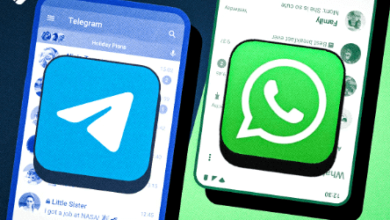Inbox Impact: Best Online Tools for Creating an Email Newsletter That Stands Out

Email newsletters are far from dead — in fact, they’re thriving. Whether you’re a small business owner, a local nonprofit, or a solo creator, building an email newsletter is one of the best ways to engage your audience consistently and directly. The catch? You need the right tools to make it professional, readable, and visually compelling — without wasting hours or overspending.
Here are the best online tools (plus an FAQ) that help you design, write, and grow your email newsletter, even if you’re just starting out.
1. MailerLite: Beautiful Newsletters for Beginners
MailerLite is ideal for anyone launching a newsletter with minimal experience. Its drag-and-drop editor makes it easy to create polished, mobile-friendly emails in minutes. Even better? You get access to email automation, A/B testing, and a landing page builder — all in the free plan.
One unique feature is the built-in survey and quiz blocks, which let you interact with your audience inside the email itself. This is great for creators and small businesses looking to gather feedback or boost engagement without needing extra tools.
2. ConvertKit: Designed with Creators in Mind
If you’re a blogger, coach, or content creator, ConvertKit is built with you in mind. It offers visual automation flows, customizable opt-in forms, and clean, text-forward templates perfect for storytelling or content updates.
What stands out is its “Creator Network” — a built-in audience exchange system where creators can recommend each other’s newsletters. This helps you grow your list organically while connecting with peers in your niche. It’s easy to scale whether you’re sending weekly updates or building full-on email funnels.
3. BeeFree.io: Design-First Email Builder
Need stunning design but don’t want to be locked into one email platform? BeeFree is a standalone, web-based editor that lets you create and export HTML emails to almost any platform — Mailchimp, Sendinblue, HubSpot, and more.
BeeFree is perfect if you work with clients or switch tools often. It also includes prebuilt templates for newsletters, promos, and event invites, all responsive and highly customizable. Use it to create your email visually, then plug it into your ESP (email service provider) of choice.
See also: How to Spot Fake Content Generated With AI Face Swap Technology
4. Substack: The Go-To for Writer-Led Newsletters
Substack has exploded in popularity for writers and thinkers who want a direct connection with their audience. It’s free to use, supports paid subscriptions, and allows you to create a blog-style archive of your newsletters — doubling as a website.
You don’t need any design skills; the platform is text-based and minimalist by default. What makes Substack unique is its discovery features — your newsletter can show up in their reading app or in search results if you grow an audience. Great for journalists, educators, and thought leaders.
5. Stripo: Advanced Design Meets Automation Flexibility
Stripo combines intuitive design tools with advanced features like AMP blocks, which allow interactive content in your emails (think: carousels, polls, or product previews). It also offers over 1,000 ready-made email templates across niches.
You can build your newsletter in Stripo and export it directly to over 70 email platforms, making it a power tool for marketers or agencies. If you’re building multiple newsletters or need enterprise-level flexibility, Stripo is a great fit.
6. HubSpot Email Marketing: CRM + Newsletter in One
For those looking to integrate email with sales and customer data, HubSpot’s free email tool is a strong contender. It connects directly with its free CRM, giving you access to smart personalization and list segmentation.
You can send up to 2,000 emails/month for free, and the visual editor makes building newsletters easy even for non-tech users. It’s particularly valuable for small businesses that want to manage relationships and sales pipelines in one place without additional cost.
💡 FAQ: Design Tips for Using Infographics in Email Newsletters
How can I make my email newsletters more visually engaging?
Use section breaks, bold headlines, and visuals like infographics to break up long content. Visuals help improve readability and retention, especially for stat-heavy updates or educational newsletters. Many tools allow you to insert graphics directly into your template.
Are infographics a good idea in email newsletters?
Yes — infographics make complex information digestible and shareable. They’re perfect for nonprofit impact reports, product updates, or data-driven content. Infographics can increase click-through rates by providing visual hooks that lead readers to your site or call-to-action.
How can I easily create infographics for my email campaigns?
You can use tools like Canva, Venngage, or Adobe Express. If you’re looking for a fast and flexible platform that doesn’t require a design background, try this infographic creator. It’s browser-based and allows you to build sleek, branded infographics in minutes.
What’s the best format for infographics in newsletters?
Use PNG or JPEG formats under 1MB in file size to ensure fast loading. Avoid large PDFs or embedded scripts. Always test on mobile — your newsletter should look great on a phone, where most people read emails today.
Can infographics improve email marketing results?
Absolutely. Infographics increase scroll depth and link engagement, especially when paired with a clear CTA. They’re ideal for updates that involve stats, timelines, workflows, or comparisons. A well-designed infographic can also be reused on social media for extra value.
Creating an effective newsletter doesn’t require fancy tools or a design degree. Whether you’re just starting out or refining your content strategy, these platforms make it easier to connect with your audience in style. Add an infographic, personalize your message, and hit send — your next great email is only a few clicks away.





